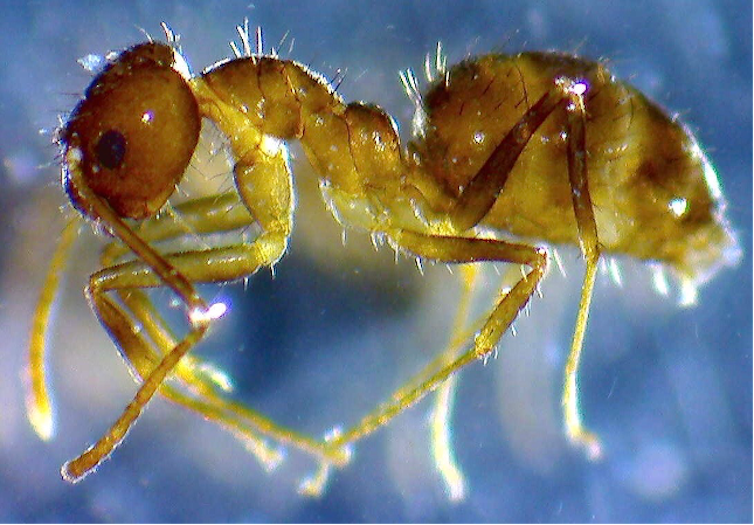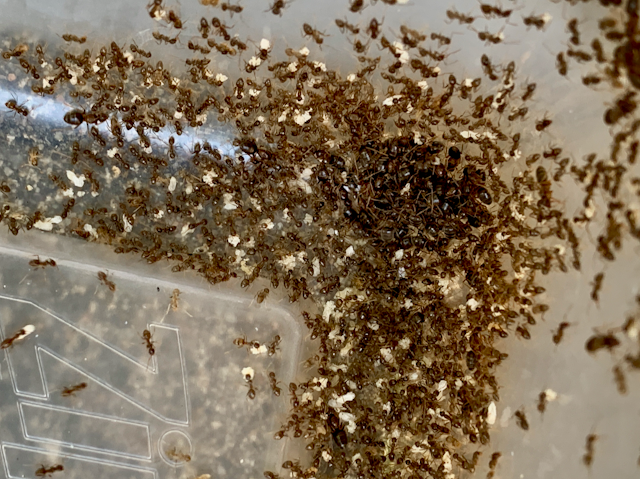The Research Brief is a short take about interesting academic work.
The big idea
In a recent study, my colleagues and I discovered micronutrients in the ground can control populations of invasive crazy ants (Nylanderia fulva).
Tawny crazy ants – named for their fast, erratic movements – can blanket the ground by the millions. Originating in South America and now established in parts of the southern U.S., they harm other insects, asphyxiate chickens and even short-circuit electronics in homes.

Crazy ants are liquid feeders that consume nectar from plants – and honeydew (or secretions) from certain insects. Ants crave these sugary resources, which boost their colony growth, enabling them to outcompete native species and ultimately spread.
The nutritional content of nectar and honeydew vary widely, however, depending on the nutrients available in a particular ecosystem. There are 25 chemical elements required to build life – too much or too little of one may cause disease. So far, ecologists only really know about the importance of macronutrients, like nitrogen and phosphorus, that are abundant in living tissue. My team wanted to learn more about what micronutrients might be important to crazy ants.

We conducted a fertilization experiment at the University of Houston’s Coastal Center and were able to demonstrate that the abundance of tawny crazy ants decreased 24% where there was more potassium and 45% where there was more sodium and potassium.
What greatly surprised our team was the discovery that ants were 13% more abundant in areas where there was more calcium – even in areas that had more sodium and potassium. This finding, published in the journal Ecology, could have big implications for the continued spread of crazy ants.
Why it matters
Ours is the first study showing calcium is important to an invasive ant, which is somewhat surprising given ants don’t have bones. It turns out, though, calcium is important in their egg production, larval development and physiological regulation.
If the spread of crazy ants continues north, the calcium-rich limestone bedrock of the lower U.S. Midwest may provide ideal conditions for populations to explode. Farmlands may be at risk because calcium is found in many fertilizers. Additionally, cities often have more calcium than surrounding areas, thanks to heavy cement use, limestone quarrying and destruction of buildings.
Tawny crazy ants not only are a major threat to the biodiversity and conservation of ecosystems but also cost the U.S. billions of dollars in damage annually.
What still isn’t known
Our results add to a small but growing list of other experiments that show the importance of micronutrients to insects.
How far will tawny crazy ants make it in the United States? Will calcium influence their spread? Could other micronutrients like magnesium or iron be important to crazy ants?
In a world where humans are changing the “ingredients” of Earth’s surface soils at an alarming rate, people may be unwittingly creating more favorable habitats for some invasive species. Figuring out which elements are most important to invasive species will be key to predicting, preventing and managing their spread.

